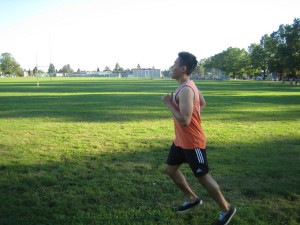It is a known fact that running adds stress on the body that oftentimes results to injury. Some injuries can be due to overtraining. Young individuals who engage on running face a higher risk for developing certain forms of overuse injuries since their bodies are not yet fully developed. Once you notice a tibia lump or bump on a young individual, it might be an indication of Osgood-Schlatter disease.
Symptoms
Many runners often experience pain and inflammation on one leg, right below the knee on the tip of the tibia. This issue is called as Osgood-Schlatter disease which is quite common among young runners during their teenage years but can last up to adulthood. This problem usually presents itself with other accompanying symptoms. The swelling or tenderness at the superior part of the tibia while running or kneeling is quite common. Other symptoms include a bony development at the upper part of the tibia that projects farther than the bone on the other tibia as well as tightened quadriceps.

Possible causes
Adolescents and young adults who are involved in sports that require a lot of running, jumping or sudden changes in direction such as tennis, basketball, soccer or volleyball often suffer from pain on their tibia, right beneath the knee. The condition is called as Osgood-Schlatter disease which is simply an overuse injury. This is quite common among young athletes in their early teens since their bones are not yet fully developed. Due to the stress from physical activity, the patellar tendon breaks away from the tibia. The pulling action will result to inflammation. Oftentimes, the bone will develop to fill in a gap amidst the tendon and the tibia, causing the distinctive tibia lump.
What is Osgood-Schlatter disease?
Osgood-Schlatter disease is not considered dangerous. The main issue faced with this condition is that it can conceal a serious injury such as a stress fracture.
The individual can run with the affected limb as long as the pain can be tolerated. In most cases of Osgood-Schlatter disease, it resolves as soon as the bone growth stops. In case the area is inflamed or harshly sore and persists even with ice and rest, a doctor should be consulted to rule out a stress fracture.
Treatment
The ideal treatment for any overuse injury is rest. The individual should run of soft, even surfaces in order to reduce the impact felt on the legs. Apply ice over the affected area and provide ibuprofen to help minimize the swelling and tenderness. The quadriceps muscle can be strengthened and stretched to prevent it from adding stress on the patellar tendon. Another form of treatment is to apply a patellar tendon strap or tape which holds the patellar tendon while running. These treatment options are comprehensively discussed in any first aid courses. All you have to do is to sign up for one today.
